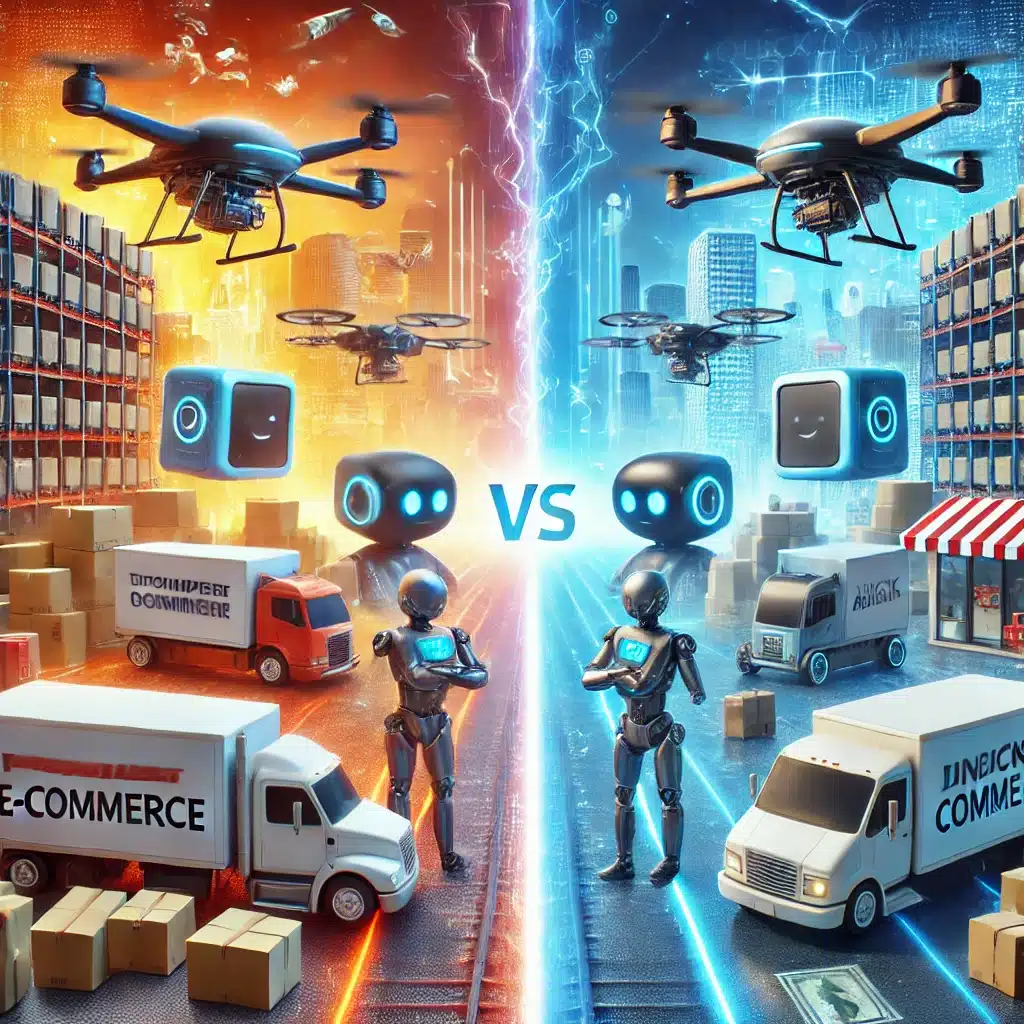Introduction
The online shopping landscape in the USA is evolving rapidly, with traditional e-commerce now facing competition from quick commerce (Q-commerce). While e-commerce has long been the backbone of online retail, quick commerce is gaining traction by offering ultra-fast deliveries, sometimes in under 30 minutes. This blog explores the key differences, advantages, and future of e-commerce and quick commerce in the USA.
What is E-Commerce?
E-commerce refers to the traditional online shopping model where customers place orders from online marketplaces or brand websites, with deliveries typically ranging from one to five days. Popular e-commerce giants in the USA include Amazon, Walmart, eBay, and Shopify-based stores.
Key Features of E-Commerce:
- Wide product range, from electronics to fashion and groceries.
- Scheduled deliveries, often taking a few days.
- Bulk buying options and discounts.
- Lower operational costs compared to physical stores.
What is Quick Commerce (Q-Commerce)?
Quick commerce, or on-demand delivery, focuses on ultra-fast delivery of essential items, usually within 30 minutes to a few hours. Companies like Gopuff, DoorDash, Uber Eats, and Instacart are leading the Q-commerce wave in the USA.
Key Features of Quick Commerce:
- Hyper-fast deliveries (within minutes or hours).
- Focus on essentials like groceries, snacks, and household items.
- Small cart sizes, as people buy only what they need immediately.
- Uses local dark stores and micro-fulfillment centers for speed.
E-Commerce vs. Quick Commerce: Key Differences
| Feature | E-Commerce | Quick Commerce |
| Delivery Speed | 1-5 days | Within 30 mins – 2 hours |
| Product Range | Extensive | Essentials & daily-use items |
| Business Model | Warehouses & shipping logistics | Local fulfillment hubs & last-mile delivery |
| Customer Expectation | Willing to wait for variety & bulk purchases | Prioritizes speed over selection |
| Popular Brands | Amazon, Walmart, Target | Gopuff, Uber Eats, DoorDash |
The Rise of Quick Commerce in the USA
The increasing demand for convenience has made Q-commerce a rising trend in urban areas. Factors driving its growth include:
- Busy lifestyles – Consumers prefer instant access to essential products.
- Tech advancements – AI-powered inventory and delivery optimization.
- Changing consumer behavior – Shift from planned shopping to impulse buying.
Future of Online Shopping: Which Model Will Dominate?
While e-commerce remains dominant for larger, non-urgent purchases, quick commerce is gaining traction for instant needs. The future will likely see a hybrid model, where retailers integrate both e-commerce and Q-commerce to meet diverse consumer demands.
Conclusion
E-commerce and quick commerce cater to different shopping needs, but both are shaping the future of retail in the USA. As technology advances and customer expectations evolve, businesses must adapt by combining speed, efficiency, and variety to stay competitive.

